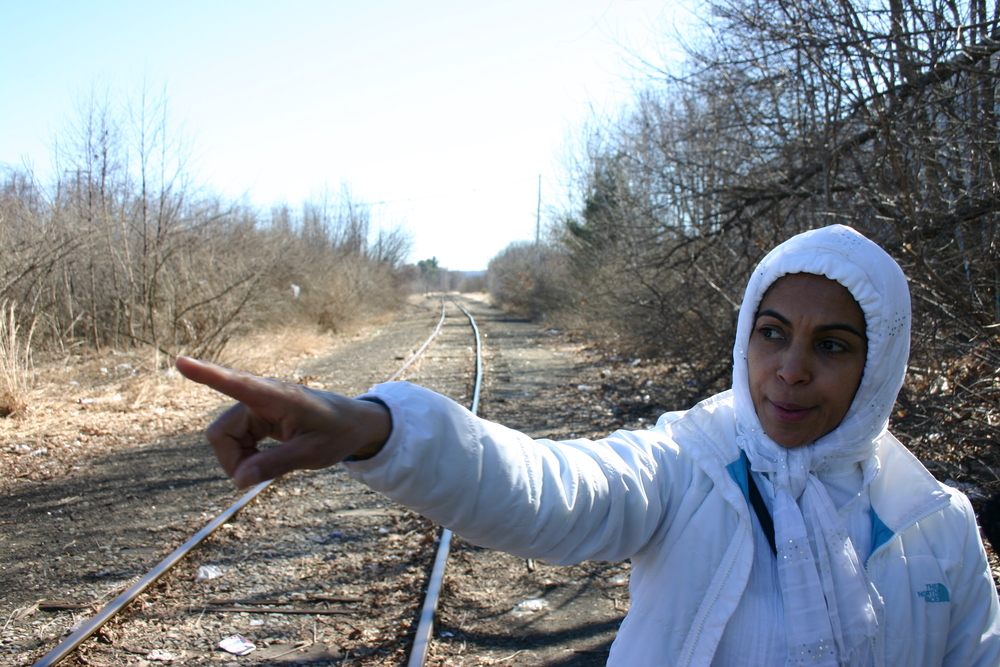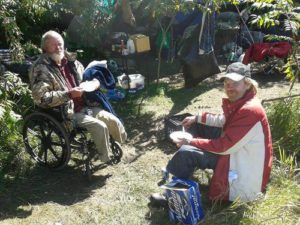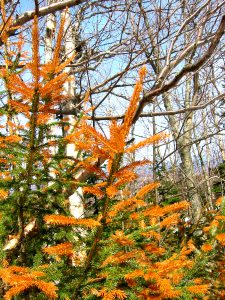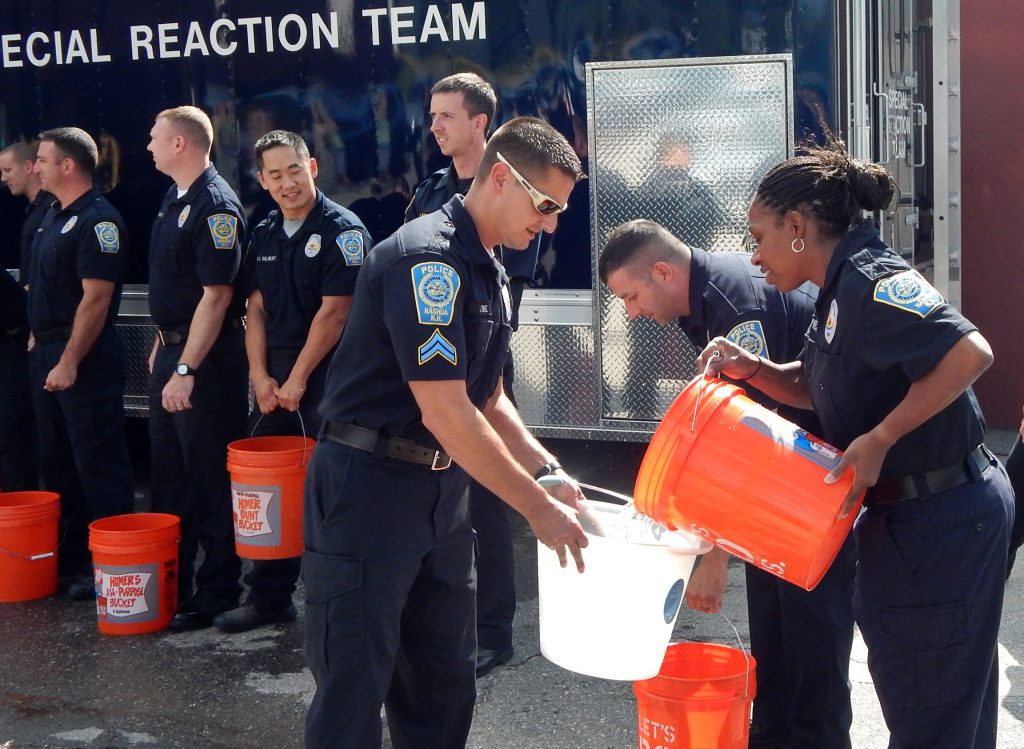Episode 22: A Roof Over Your Head

In January of last year, a disabled homeless man was struck and killed by a car in Concord, New Hampshire. Gene Parker’s death raised questions about the causes and effects of homelessness in that state. This week we hear from two reporters who went looking for answers.
Plus, listen to what we’ve learned from 50 years in the life of an experimental forest, and what biologists are doing to help big animals move safely under highways. And last, we get an inside look at policing and race discrimination.

Conchord resident Liza Urena points to one of the places her friend Gene Parker slept. She brought him meals and gave him rides almost every day, and helped him find safe spots to sleep. Photo by Jack Rodolico for NHPR
Homeless in New Hampshire

Gene Parker (left) with his friend “Red” Glodgett. Photo submitted by Liza Urena
New Hampshire Public Radio reporters Jack Rodolico and Natasha Haverty learned a lot about Gene Parker after his death. They discovered friends who looked out for Parker and a social worker who struggled to find him housing, and learned why finding him a place to live indoors was nearly impossible.
Digging into homelessness in their state, Rodolico and Haverty also took a trip to a small town motel, where they met people with incomes, but without permanent homes. We hear stories from their excellent series, “No Place To Go, Homelessness In New Hampshire,” and discuss possible solutions.

“We look out for each other,” Ovi Charast (right) says. That night before he and three friends had slept on the floor of one room at the PK Motel. Photo by Jack Rodolico for NHPR
Animal Highways and Experimental Forests
Look at a map of New England, and you’ll see lots of forested areas. But a growing challenge for wildlife is that this habitat is increasingly fractured. As humans have built roads and housing developments, crossing between key forest areas — such as between the Adirondacks and the Green Mountains — have become more dangerous for animals like moose and bear.

Massachusetts has identified key potential crossing areas to focus on. Credit: The Nature Conservancy
To tackle this challenge, New England and eastern Canadian provinces have banded together to preserve what they’ve identified as 9 key critical pathways in the region.
Six out of nine of those linkage areas fall in Vermont. As Vermont Public Radio’s Kathleen Masterson reports, part of the project involves studying just how animals cross the road.
In the early 1960s, a group of environmental scientists began a research project on a scale that had never been done before. Their laboratory was a whole ecosystem: the 7800- acre Hubbard Brook Experimental Forest, in New Hampshire’s White Mountains.

Freezing injury in red spruce needles during the cold winter of 2003 brought about by leaching of calcium from the needles by acid rain. Photo by G.J. Hawley, courtesy Yale University Press
One of their first observations – the high acidity of the water in forest streams – led to awareness of acid rain and the eventual amendment of the Clean Air Act in 1990.
More than 50 years later, researchers at Hubbard Brook are documenting the effects of climate change, the decline in bird populations, and more.
We speak with Gene E. Likens, co-founder of the Hubbard Brook Ecosystem Study and co-author of the book Hubbard Brook: The Story of a Forest Ecosystem, published in May of this year.
Hubbard Brook Experimental Forest is located in North Woodstock, New Hampshire, about an hour north of Concord. It is open to the public year-round.
“I Stick Out Like A Sore Thumb”

Sergeant Lakeisha Phelps and colleagues at the Nashua, NH police department participate in an ice-bucket challenge to raise awareness for ALS, in August, 2014. Phelps is one of two black police officers in a force of 170. Photo by Dean Shalhoup for the Nashua Telegraph
In Episode 5, reporter Emily Corwin of New Hampshire Public Radio brought us her investigation into the criminal justice system in Hillsborough County, New Hampshire – the most populous and most diverse county in an overwhelmingly white state. She found that blacks are six times more likely to be in jail than whites.

Jose Rodriguez (L) stands with Providence Police Officer Dean Isabella. Photo by John Bender for RIPR
There’s a disparity in the police force, too. In the city of Nashua, there are only two black officers in a police force of 170. This week, Sergeant Lakeisha Phelps tells us what it’s like to be one of those two.
Dean Isabella grew up on the western edge of Providence, an area has long dealt with high crime rates. Working as a police officer in the same neighborhood, Isabella met Jose Rodriguez, a teenager who was in a gang.
Years later, their paths crossed again when Rodriguez began working to stop gang violence with the Institute for the Study and Practice of Non-Violence. Isabella and Rodriguez describe how their friendship developed as part of Rhode Island Public Radio’s series “Speaking Across Difference.”
About NEXT
NEXT is produced at WNPR.
Host: John Dankosky
Producer: Andrea Muraskin
Executive Producer: Catie Talarski
Digital Content Manager/Editor: Heather Brandon
Contributors to this episode: Natasha Haverty, Jack Rodilico, Kathleen Masterson, Emily Corwin, John Bender
Music: Todd Merrell, “New England” by Goodnight Blue Moon
We appreciate your feedback! Send praise, critique, suggestions, questions, story leads, and pictures of your corner of New England to next@wnpr.org.


